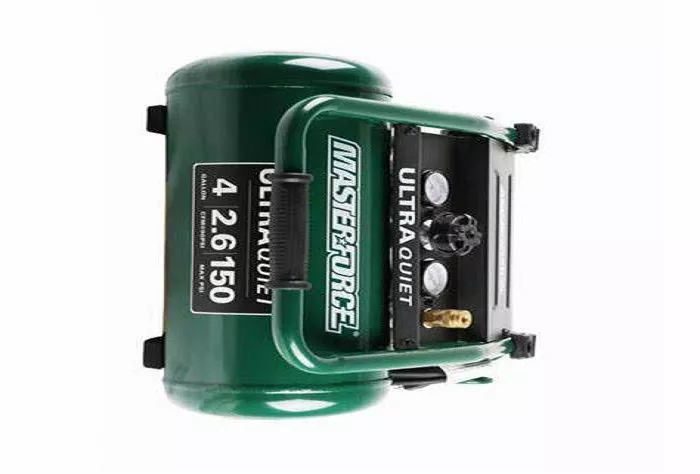The Smittybilt Air Compressor is a popular choice among off-road enthusiasts, professional mechanics, and outdoor adventurers. Known for its durability, portability, and high performance, this compressor is designed for inflating tires, powering air tools, and other pneumatic tasks.
Understanding the Smittybilt Air Compressor
Key Features
- High Airflow Output: Delivers fast inflation (measured in CFM – Cubic Feet per Minute).
- Portable Design: Compact and often comes with a carrying case.
- Durable Construction: Built to withstand rough off-road conditions.
- 12V or 110V Power Options: Some models plug into a vehicle’s cigarette lighter, while others use standard AC power.
- Automatic Shutoff: Prevents overheating and motor burnout.
Common Models
- Smittybilt 2781: 5.65 CFM, 12V, ideal for off-road tires.
- Smittybilt 2747: 2.8 CFM, compact for light-duty use.
- Smittybilt 2780: Heavy-duty, 7.0 CFM for larger tires.
Safety Precautions
Before operating the compressor, follow these critical safety steps:
- Check Voltage Compatibility: Ensure the power source matches the compressor’s requirements (12V or 110V).
- Avoid Overheating: Let the compressor cool between extended uses.
- Proper Ventilation: Operate in an open area to prevent carbon monoxide buildup (if gas-powered).
- Secure Connections: Loose hoses or clamps can cause air leaks or injuries.
- Wear Protective Gear: Safety glasses and gloves are recommended.
Setup and Installation
Step 1: Unpacking and Inspection
- Remove the compressor from its packaging.
- Check for missing parts (hoses, power cables, pressure gauge).
- Inspect for physical damage (cracks, leaks, or loose wires).
Step 2: Power Connection
For 12V Models
- Connect the alligator clips to the vehicle battery (red to positive, black to negative).
- Ensure the vehicle is running to avoid battery drain.
For 110V Models
- Plug into a standard grounded outlet.
- Use an extension cord rated for high amperage if needed.
Step 3: Hose and Accessory Attachment
- Connect the air hose to the compressor’s output port.
- Attach the tire chuck or air tool to the hose.
- Ensure all connections are tight and secure.
Operating the Smittybilt Air Compressor
Step 1: Power On
- Turn on the compressor using the power switch.
- Listen for unusual noises (grinding or hissing indicates a problem).
Step 2: Pressure Adjustment
- Use the pressure regulator (if equipped) to set desired PSI.
- For tires, refer to the vehicle manufacturer’s recommended PSI.
Step 3: Monitoring Performance
- Watch the pressure gauge to avoid overinflation.
- If the compressor overheats, turn it off and let it cool.
Inflating Tires (Step-by-Step)
Step 1: Prepare the Tire
- Remove the valve stem cap.
- Press the tire chuck firmly onto the valve stem.
Step 2: Start Inflation
- Turn on the compressor.
- The gauge will show real-time pressure.
Step 3: Check and Adjust
- Stop periodically to verify pressure with a separate gauge.
- Avoid exceeding recommended PSI (can cause tire damage).
Step 4: Disconnect Safely
- Turn off the compressor.
- Remove the chuck and replace the valve cap.
Using with Air Tools
The Smittybilt compressor can power impact wrenches, nail guns, and sprayers if it has sufficient CFM.
Steps for Air Tool Use
- Check Tool Requirements: Ensure the compressor’s CFM matches the tool’s needs.
- Attach the Tool: Use a quick-connect coupler for easy installation.
- Adjust Pressure: Set the regulator to the tool’s required PSI.
- Operate in Short Bursts: Prevents overheating.
Maintenance and Troubleshooting
Regular Maintenance
- Clean Air Filters: Prevents dust buildup.
- Check for Leaks: Apply soapy water to hoses; bubbles indicate leaks.
- Drain Moisture: If equipped with a tank, release condensation.
Common Issues & Fixes
| Problem | Solution |
|---|---|
| Compressor won’t start | Check power connections, fuses, and battery. |
| Slow inflation | Clean air filter, check for leaks. |
| Overheating | Allow cooling time between uses. |
| Inaccurate gauge | Test with a separate pressure gauge. |
Best Practices for Longevity
- Store Properly: Keep in a dry, dust-free place.
- Avoid Overworking: Follow duty cycle recommendations.
- Use Quality Accessories: Cheap hoses and fittings can reduce efficiency.
- Regular Inspections: Check wires, hoses, and connections before each use.
Conclusion
The Smittybilt Air Compressor is a reliable and powerful tool when used correctly. By following this professional guide, you can ensure optimal performance, safety, and longevity. Whether inflating off-road tires or running air tools, proper setup, operation, and maintenance are key. For best results, always refer to the manufacturer’s manual and perform routine checks. With the right care, your Smittybilt compressor will serve you well for years.

